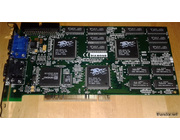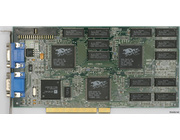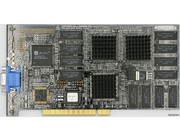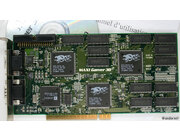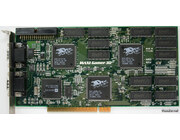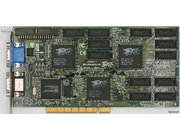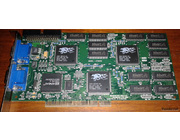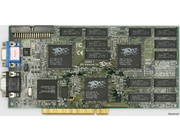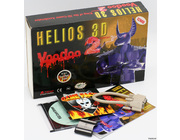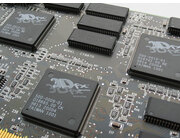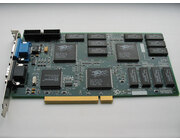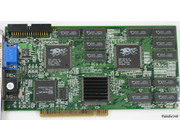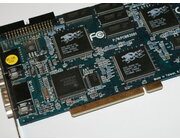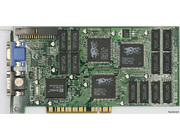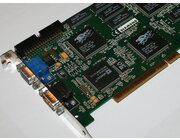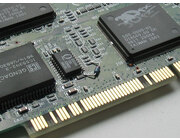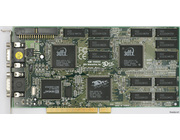The Voodoo2 was released in February 1998 to replace the original Voodoo Graphics (SST-1).
Performance was increased by adding an extra TMU (Texture Mapping Unit), adding faster RAM and increasing the clock-freuqency to 90MHz. Each TMU has it's own 64-bit memory interface and can address 2MB texture memory on 8MB models, and 4MB texture memory on 12MB models.
| One PC can fit two Voodoo2 cards using SLI (Scan Line Interleave) technology. This doubled rendering throughput and increased framebuffer memory allowing a resolution of 1024x768. The original Voodoo Graphics could do SLI as well, but this was not utilized in normal consumer versions. The Voodoo 2 SLI was a strong performer. It could out-perform a Riva TNT 2 in Unreal (3dfx glide optimized game) and was comparable with the Voodoo 3 2000/3000. Enthusiasts loved the Voodoo 2 for being the last 3D-accelerator which could be installed in their new PC. This led to various attempts on improving drivers and running modern games on a Voodoo 2 SLI setup. For example, Doom III, which is playable on a Voodoo 2 SLI setup. | 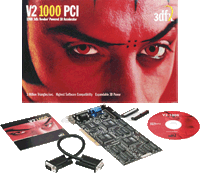 |
